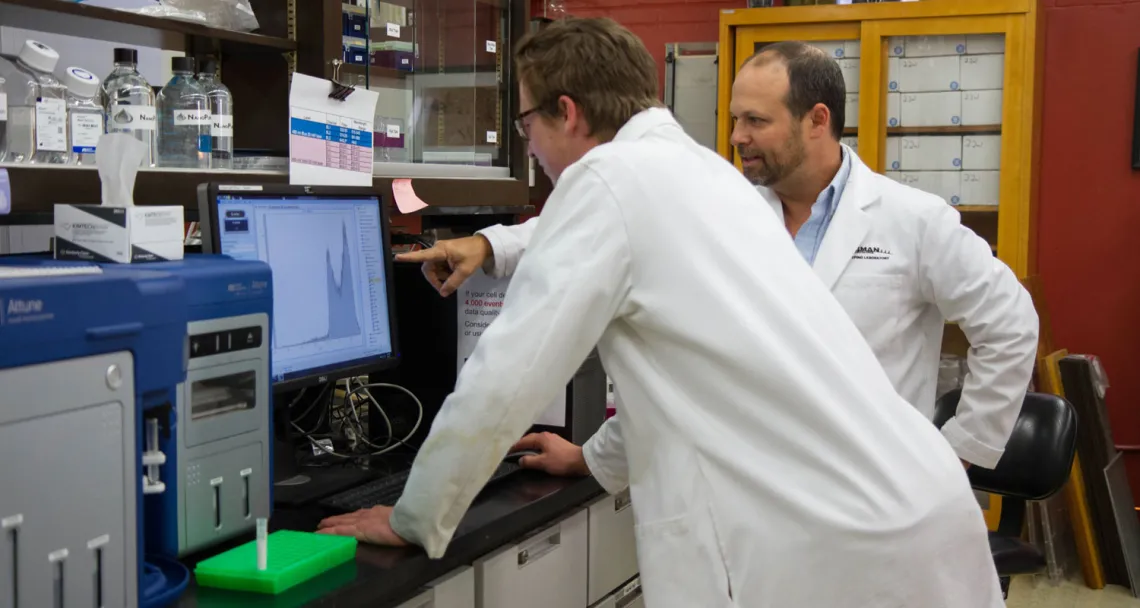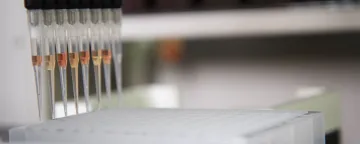How a UA Lab Jumpstarted a National Phenomenon in Home DNA Ancestry Testing

In 1999, “Millennium” by the Backstreet Boys was the United States’ top-selling album, impeachment proceedings had begun for Bill Clinton, and Matt Kaplan was a graduate student at the University of Arizona.
Genetics was front of mind in the scientific community’s consciousness. Kaplan was studying human population genetics with geneticist Michael Hammer in his laboratory at the University of Arizona Genetics Core (UAGC), and their collaborator Karl Skorecki, then at the Technion-Israel Institute of Technology in Haifa. The UAGC (part of the UA’s Research, Innovation & Impact core facilities) was established to accelerate interdisciplinary work and provide access to large scale instrumentation shared among researchers in core facilities.
What they didn’t know was how their work would eventually turn into a multi-million dollar industry that includes home genetic testing to find out everything from one’s ancestral roots to the breed of their dogs.
“Fundamentally our university-wide core facilities are keys to research. By enabling researchers – from across campus to industry to government – with the best possible tools, they are able to make innovative discoveries that become part of our daily lives,” said Kimberly Andrews Espy, Senior Vice President for Research at UA. “Our investments in our core facilities support and help to realize the great ideas of our researchers at the University of Arizona.”
Tracing Jewish Priesthood through the Y Chromosomes
Just two years earlier, in 1997, Skorecki and collaborators, including Hammer, had published a study in Nature, titled “Y chromosomes of Jewish priests,” in which they found genetic traces of the Jewish priesthood said to have begun with Moses’ brother Aaron. According to tradition, Aaron was the first high priest.
A New York Times story about the study read, “In an unusual marriage of science and religion, researchers have found biological evidence in support of an ancient belief: certain Jewish men, thought to be descendants of the first high priest, Aaron, the older brother of Moses, share distinctive genetic traits, suggesting they may indeed be members of a single lineage that has endured for thousands of years.”
In the Jewish tradition, the only way to become a priest—different than a rabbi, although a priest can become a rabbi—is to be born the son of a priest. Like the Y chromosome itself, Jewish priesthood is passed down from father to son.
So the scientists analyzed the DNA of 188 Jewish men from Israel, North America and England, 68 of whom had been told by their families that they were priests. The rest were identified as laymen. By studying two different markers on their Y chromosomes, called “variable regions of DNA,” the scientists found strong evidence that, indeed, the priests have distinctly and consistently different Y chromosome markers than laymen, suggesting that the more than 3,000-year-old oral tradition is biologically sound and that these men may carry the Y chromosome of Aaron himself.
The study was nothing short of a revolution in the field, garnering international attention and prestige.

Nat Geo’s The Journey of Man
In 2003, just a few years after their ground-breaking work, National Geographic aired a documentary film called The Journey of Man, based on the work of Harvard-educated geneticist and anthropologist Spencer Wells. In it, Wells discusses how genetics and evolutionary biology can trace human migration out of Africa.
By this point, tracing familial lineage was no longer the hip new thing. Tracing shifts in migration was.
The documentary caught fire with the American public, who had already seen a plethora of genetics research in the news. National Geographic saw an opportunity to create a one-of-a-kind public participant experience, whereby people could trace their own route back to Africa via DNA testing. They targeted processing 20,000 samples a year over the course of five years. But not having the infrastructure to create a DNA kit, let alone analyze results, the company sought out partners who could.
In 2004, Nat Geo approached Hammer and a third-party commercial entity that marketed to consumers about a partnership.
Their collaboration became National Geographic’s and IBM’s Genographic Project, launched in 2005.

To prepare for launch day, says Kaplan, Hammer’s lab had to have 30,000 kits ready for shipping. Effectively, this meant filling 60,000 collection tubes, sourcing the swabs, making sure the lab was ready to extract thoroughly unprecedented amounts of DNA, run PCR, and send the results to the UA’s Biocomputing Facility (another RDI core) - run by Nirav Merchant—for data management and analysis.
It was a hectic and awesome time, recalls Kaplan. So hectic and awesome, in fact, that the lab had to bring in more workers to prepare collection tubes for the kits. Tucson’s San Miguel High School filled in a critical gap in the lab’s workforce. At San Miguel, students from families with limited financial means take a full college preparatory course load while also holding internships, working in corporations, and earning nearly forty percent of their school tuition. A group of San Miguel students served as interns for the lab as the Geographic Project was just getting started, and were there to help when the lab received a whole 28,000 samples for analysis in the first month after the launch.
Between 2000 and 2012, over 657,000 people were DNA tested through the UA. At the height of kit sales, the lab had about 20 staff and 30 undergraduate students dedicated exclusively to this project. In the process, the lab made millions of dollars of excess revenue for the University, and became early experts in high-throughput biology.
A few short years later, what started in a lab at the UA has become a national phenomenon and helped to solidify UA’s position as a national genetics leader. The work was also instrumental and served as a foundation for UA’s selection as the first cohort of four (along with world-renowned medical centers at Columbia University, Northwestern University and the University of Pittsburgh) for the single largest competitive NIH award in Arizona’s history (greater than $43 million), as a part of the Precision Medicine Initiative.

